Create your own amazing garden.
Bottle garden is a glass or transparent plastic vessel inside which planted plants.
Air access to the tank is limited or completely blocked, resulting in a humid climate favorable for the cultivation of tender and capricious plants that can hardly endure harsh room conditions.
|
 |
Everyone who saw this vegetable world, which is formed in a confined space with constant humidity, temperature and lighting, a world ideal for heated premises, I want to make myself such a miracle. This is quite real!
 |
A closed plant world is created in the terrarium.
The terrarium is a small glass container, aquariums of various shapes can be used as terrariums - from round to ordinary rectangular, large bottles, unusual glass jars or even large glass glass salads covered with glass.
|
Plants that need very moist air, in our apartments is not easy. Optimum conditions for them can be achieved by putting them in a pot-bellied bottle of transparent glass, here they will inherit the microclimate inherent in them from birth. For the device of the kindergarten in the bottle, the following is important:
Do not take flowering plants: they do not look beautiful for long, and, as soon as they blossom, they should be removed immediately. Often, the bottle can not be opened - the entire system and functions provided that the neck is tight and permanently closed.
The neck of the bottle should be narrow enough that it can be clogged, but at the same time so wide that you can work inside the bottle.
 |
In order to arrange a garden in a bottle, you need to independently invent several tools: |
 |
Using a funnel made of heavy paper, the drainage material and the earth are covered in a bottle. |
 |
Try to arrange instead of plants paper about the same size, in order to think over the composition. High plants should be located behind, and small ones in the foreground. Each well should be done separately: a teaspoon to dig a hole in the ground, plant a plant, and then take on the next hole. |
 |
Pre-selected plants for the garden are removed from the pots. Large earthen lumps should be cut off, and then the green plantations will grow more slowly in size. |
 |
The plants taken from pots, with two chopsticks, are placed in pre-prepared wells. First, plant the plants closer to the walls of the vessel, and then those that will grow in the middle. |
 |
After you place all the small tropical plants on the bottom of the bottle, you need to compact the ground and sprinkle them with a small spray. The inner walls of the bottle can be cleaned with a sponge on a strong, flexible wire. |
Tightly clogging the vessel and putting it in a bright, but not sunny place, you will long months to admire the "garden in the bottle." From time to time it is necessary to air it and if the plants are too large, cut them.
It is possible to put into the bottle bizarre little snags that fill the empty space between the plants and the neck of the bottle. And if you add small stones to the vessel, you will get a charming miniature landscape.
Plants for terrariums: The number of plants that can be grown in terrariums and bottles is rather limited. You can plant only those plants in which the root system is small or nonexistent. Below is a list of plants suitable for cultivation in a terrarium located far from the light source.
 |
Air is a cereal "Variegata" . A herbaceous evergreen plant with mottled (along the entire length of cream and green stripes) leaves, 25 cm high. Easy to grow, well tolerates a lack of moisture. |
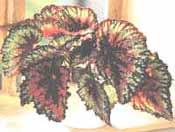 |
Begonia royal.
Only forms with small leaves are suitable. Looks good in the center of the composition, height 15 cm. |
 |
Dracena Sander.
A slender plant with narrow leaves in large white spots, grows rather slowly. Height 30 cm. |
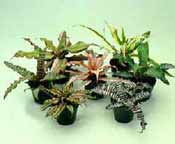 |
The cryptanthus is bromeliad . Herbaceous stalkless plant with outstretched star-shaped rosettes of green leaves with white specks from below. Small white flowers, collected in the head buds in the center of the plant, look very attractive. Height 8 cm. |
 |
Maranta is a low-protein . Some species have very attractive spotted foliage. Retractable stems. Height of 20 cm. |
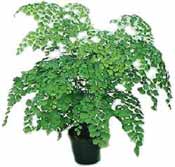 |
Ferns.
Specifically, the following can be recommended: the adianum Ruddy, the adiantum chalky-horny), the round-leaved pelella, the ptyris xiphoid Victoria. |
 |
Pellionium is beautiful with creeping reddish stems.
Dark green leaves are covered with a network of brownish veins, below the leaves are purple. The height is 7.5 cm. |
 |
Pilea Kadie, a silver pilea . Use the dwarf form "Nana". A bright silvery patch on the green leaves makes this plant attractive. Height 15 cm. |
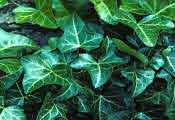 |
Ivy.
Some of the many ivy varieties have very small leaves and are therefore suitable for growing in vessels with a limited surface. This is "Little Diamond", "Spetchley", "Tre Coupe". |
 |
Selaginella Krausa . Branched creeping stems, small leaves with filmy outgrowths resembling moss, - the plant creates an excellent cover of the soil mixture in the terrarium. |
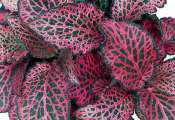 |
Fitton Vershaffelta.
Large oppositely seated leaves with red veins on an olive-green background. Fittonium silverybright - differs from the previous species with silvery-white veins on the emerald leaf background. Both these plants are short, height 7.5 cm. |
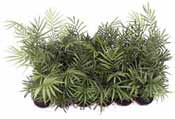 |
Hamedorei elegant.
A small palm tree with graceful stems and pinnate leaves with narrow pointed lobes. The height is up to 1.2 m, but grows very slowly, so it is an ideal plant for placing in the center of the composition. |


Comments
When commenting on, remember that the content and tone of your message can hurt the feelings of real people, show respect and tolerance to your interlocutors even if you do not share their opinion, your behavior in the conditions of freedom of expression and anonymity provided by the Internet, changes Not only virtual, but also the real world. All comments are hidden from the index, spam is controlled.